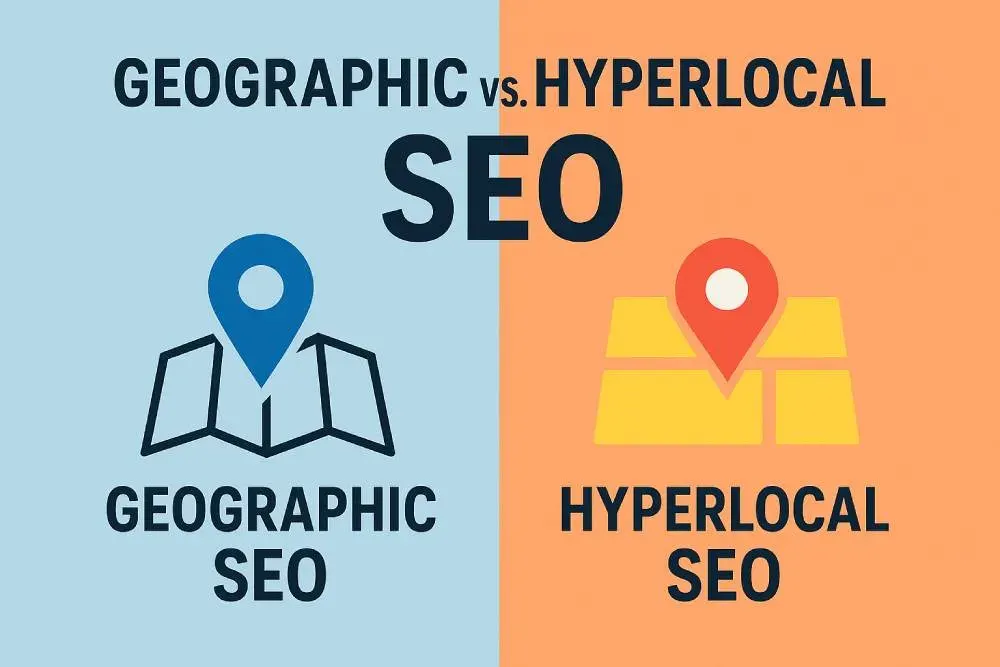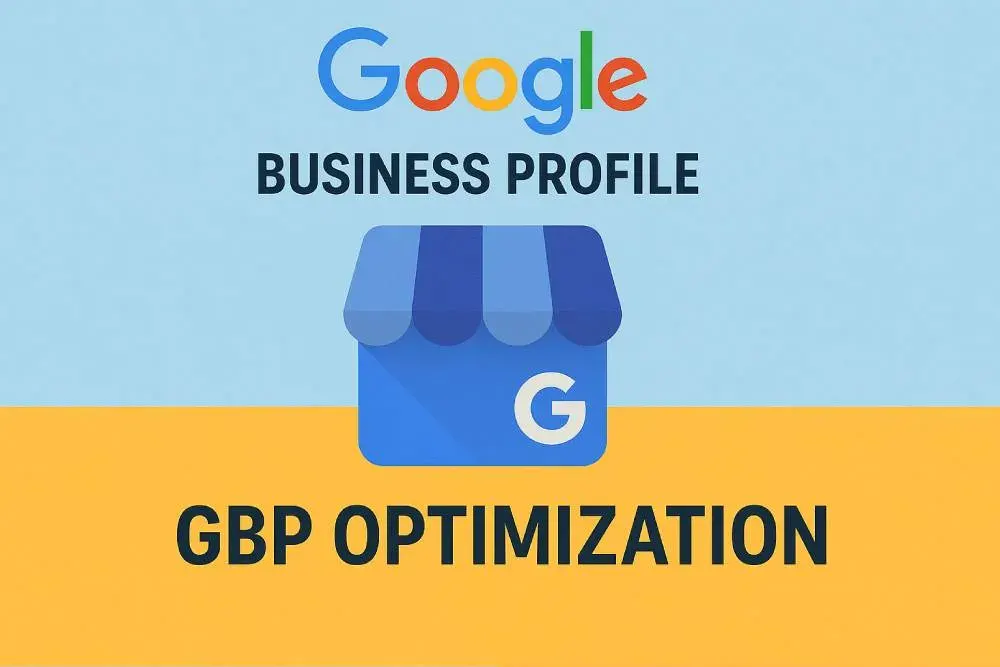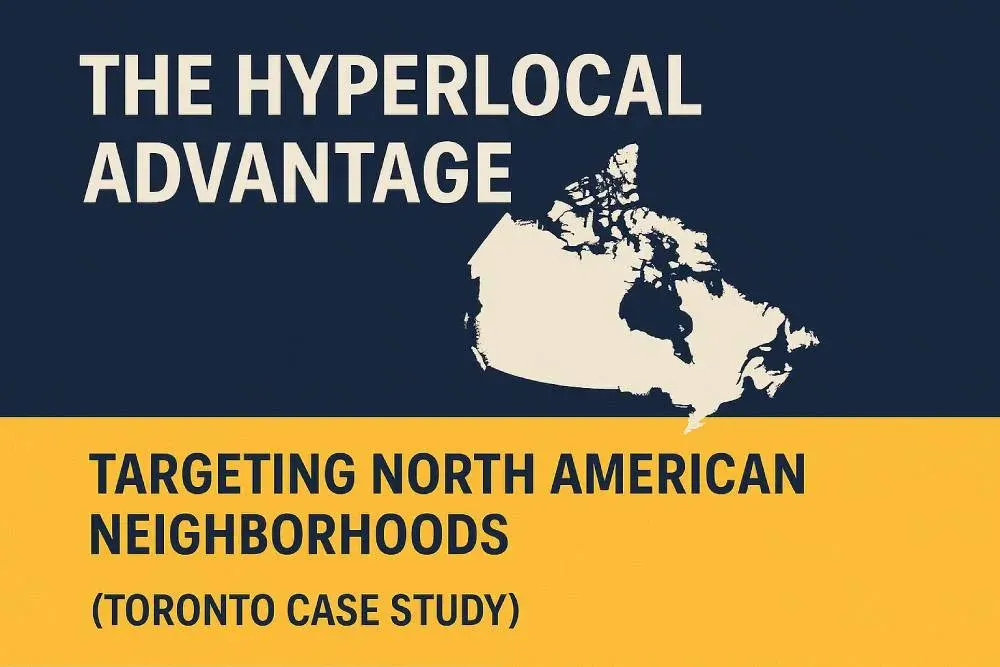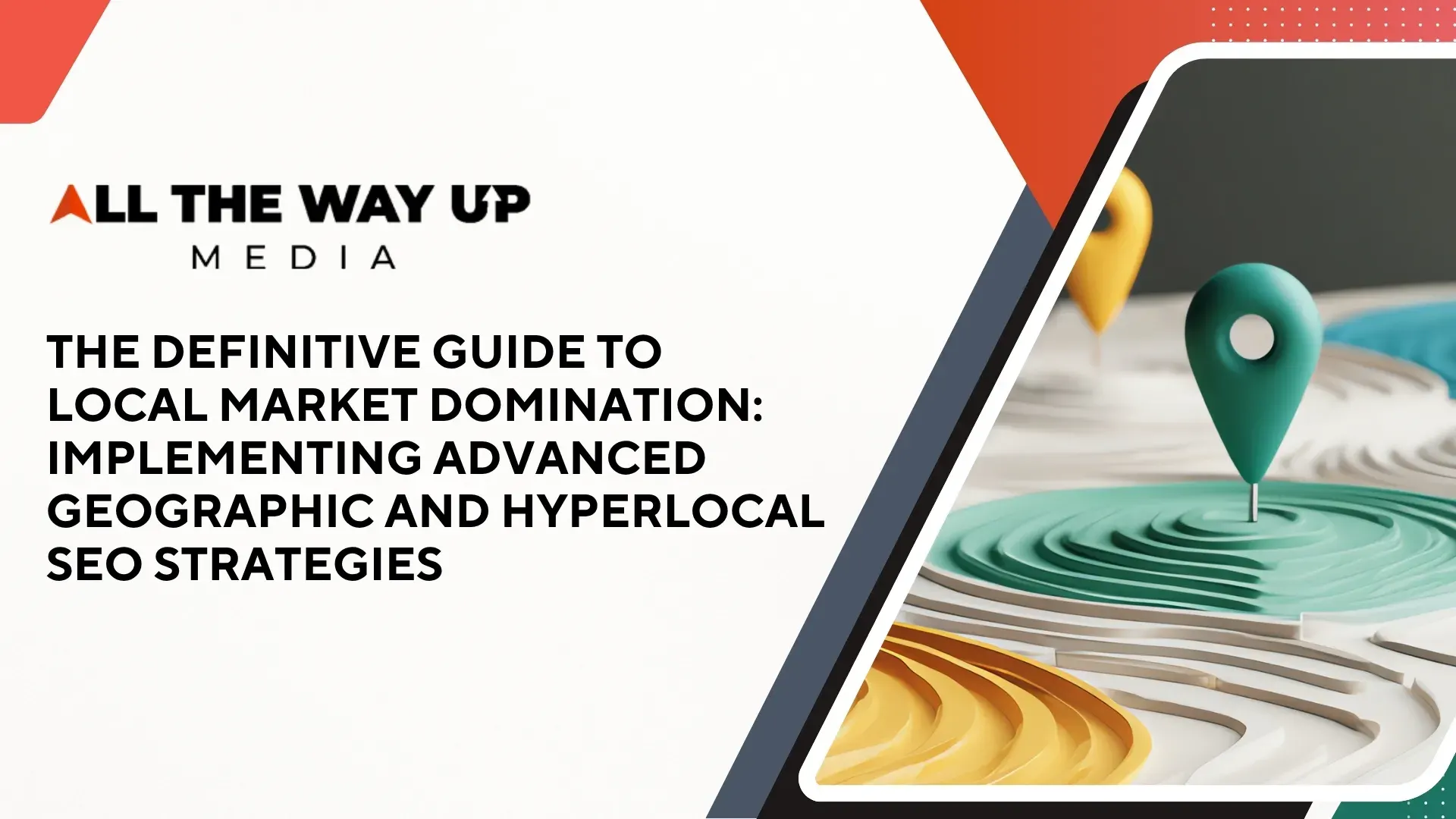I. The Strategic Foundation: Geographic vs. Hyperlocal SEO
Modern local search optimization demands precision and scalability. For businesses operating within competitive North American metropolitan regions, such as the Toronto area, a singular, generalized SEO approach is insufficient. The successful strategy must differentiate between optimizing for broad regional presence and executing granular, neighborhood-specific targeting. This distinction forms the basis of Geographic (Geo) SEO versus Hyperlocal (H-SEO).
1.1 Defining the Local Search Ecosystem and Search Intent
The contemporary local search environment is defined by high consumer velocity and deep transactional intent. Users who conduct location-based searches are frequently ready to engage or purchase immediately.1 The evidence suggests that local SEO is no longer confined to mere directory listings; it is fundamentally about crafting a genuine, relevant real-world experience that fosters engagement across all digital touchpoints.2
The search landscape is continually shaped by advancements like Google’s introduction of Large Language Models (LLMs) into maps and search results. These LLMs are engineered to interpret complex, conversational queries, moving the ranking criteria beyond simple keyword matching toward comprehensive, entity-rich, and highly contextual content.2 This technological shift means that content authority is derived from topical depth and demonstrable relevance to the searcher’s specific need and location, not just high domain metrics. The extreme speed of local consumer action where over 75% of individuals who perform a local search on a smartphone visit a physical location within 24 hours 1 means that trust signals must be immediately evident and authoritative. This necessitates that the initial investment in local visibility heavily favors elements that instantly convey reliability and proximity, making meticulous profile optimization and review management a higher priority than traditional, long-term off-page authority building.
1.2 Geographic SEO vs. Hyperlocal SEO: Strategic Differentiation
Geographic and Hyperlocal SEO are two distinct strategies within the broader location-based optimization field, differing primarily in their scope and application.
Geographic (Geo) SEO Scope
Geo SEO is focused on optimizing a business for a broader area, often encompassing an entire metropolitan region, a large city, or a national search landscape with regional targeting elements. The target keywords generally include specific geographic location terms but are applied broadly, such as “Greater Toronto Area Plumbers” or “New York tech companies.” Strategy elements for Geo SEO typically concentrate on creating broad regional content, executing advanced keyword targeting for city-level terms, and building a regional link profile.4
Hyperlocal (H-SEO) Scope
Hyperlocal SEO, by contrast, “zooms in” on ultra-specific, small geographic zones, such as individual neighborhoods, districts, or specific streets.5 Examples of target intent might include “Best dentist in Leslieville” or “Plumber near Queen Street.” The tactical execution of H-SEO relies heavily on meticulous Google Business Profile (GBP) maintenance, generating specific content tailored to neighborhood contexts, and acquiring ultra-local citations and backlinks.4
Table Title: Geographic vs. Hyperlocal SEO: Strategic Comparison
| Feature | Geographic SEO (Geo SEO) | Hyperlocal SEO (H-SEO) |
| Primary Scope | City, Region, or Large Metro Area (e.g., Greater Toronto Area) 4 | Specific Neighborhood, District, or Street (e.g., Leslieville, Queen Street) 5 |
| Keyword Focus | General local terms (“Plumber Toronto,” “Best Dentist North York”) 5 | Ultra-specific long-tail terms (“Emergency Plumber near Queen Street,” “Dentist Leslieville reviews”) 7 |
| Content Strategy | Regional content, broad service pages, city hubs. | Dedicated, tailored landing pages referencing local landmarks and community details.8 |
| Link Building | National, regional, and general local business links.6 | Ultra-local backlinks from neighborhood associations, local events, and community blogs.6 |
| Primary Tool | Website optimization, regional link profile. | Meticulously optimized Google Business Profile (GBP) and localized pages.[4, 9] |
1.3 The Necessity of a Hybrid Strategy for North American Markets
For businesses operating in highly competitive urban markets, a hybrid approach combining Geo SEO and Hyperlocal SEO is required for comprehensive market dominance. Geo SEO establishes the initial authority for the metropolitan area, ensuring presence for high-volume, general city searches. However, it is Hyperlocal SEO that captures the most valuable traffic: the low-volume, high-conversion long-tail searches that signal immediate buying intent.8
The integration of sophisticated algorithms leveraging LLMs requires that localized content must possess genuine contextual depth. Therefore, simply generating template pages that swap city names is an inadequate approach. Content must address specific, localized issues, such as detailing tailored services or addressing common problems inherent to certain older districts in Toronto. This level of granular detail not only improves the user experience but also signals strong relevance and topical authority (E-A-T) to the search algorithm, significantly increasing the probability of ranking highly for complex, high-intent searches.10 While Hyperlocal strategies demand labor-intensive content creation and specialized link acquisition from neighborhood associations or local events 6, they demonstrably yield superior conversion rates and enhanced search visibility within the immediate service radius, proving essential for achieving localized market dominance.1

II. Blueprint for Map Pack Dominance: Google Business Profile (GBP) Optimization
The Google Map Pack (the “3-Pack”) is arguably the most critical local ranking feature, acting as the primary conversion funnel in local search. Businesses featured in the Map Pack receive a substantial 93% more actions (calls, website clicks, and driving directions) compared to those ranked 4 through 10.1 Mastering the optimization of the Google Business Profile (GBP) is therefore the essential foundation for local market penetration.
For a deep dive into the mandatory steps required to secure your listing, review our detailed guide on Google Business Profile optimization.
2.1 Understanding the 3 Core Pillars of Map Ranking
Google Maps determines ranking based on three core, interdependent factors:
- Relevance: This measures how accurately the business’s GBP profile specifically the primary and secondary categories and the description matches the terms and implied intent of the search query.9
- Distance (Proximity): This is a measurement of how far the physical location of the business is from the specific searcher’s location at the time of the query.
- Prominence: This factor assesses the business’s overall authority and recognition across the web. Prominence is heavily influenced by the volume and quality of reviews, aggregate ratings, and the consistency and strength of the business’s local citation and link profile.11
2.2 Mandatory Setup and Verification Protocols
The optimization process begins with foundational integrity and consistency:
- Claiming and Verification: A business must claim and fully verify its GBP listing to gain full control and ensure eligibility for placement in the Map Pack.9 Unverified listings have limited visibility and optimization potential.
- NAP+W Consistency: The principle of Name, Address, Phone Number, and Website URL (NAP+W) consistency is a non-negotiable requirement. Search engines view discrepancies across the GBP and other online directories (citations) as a signal of unreliability, which erodes trust and ranking potential.9 A meticulous audit and cleanup of all existing citations are necessary to maintain this flawless consistency.11
2.3 Advanced Categorization and Service Area Configuration
Effective categorization is the single most influential factor in relevance scoring for the GBP:
- Selecting Categories: The optimization process requires careful selection of the single, most relevant Primary Category that accurately defines the business’s core offering. This category drives the highest degree of relevance matching. Additional secondary categories should be selected strategically to cover related service offerings.9
- Service Area Business (SAB) Management: For service providers that do not operate solely from a physical storefront (e.g., plumbers, general contractors), or those employing a hybrid model 12, defining the precise operational Service Area is crucial. For entities pursuing multi-hyperlocal targeting across a region, the GBP defines the broad operational area, while the dedicated neighborhood-specific landing pages detailed in Section III are required to capture granular, neighborhood-specific search intent.8
2.4 Review Generation and Management Protocols
Reviews are critical components of both ranking (Prominence) and conversion, offering the highest measurable return on effort in local SEO.
- The Conversion Uplift: Positive reviews translate directly into revenue. When a business successfully increases its average star rating by one full star, the conversion rate on the GBP (measured by calls, website clicks, or direction requests) improves by a substantial 44%.1 Reviews are not merely a ranking signal; they are a direct conversion accelerator.
- Systemic Generation: Businesses must implement a continuous, sustainable process for soliciting positive, recent customer feedback. The recency of reviews is a key factor in how consumers and search engines assess real-time business prominence.9
- Responding to Reviews: This crucial action is often undervalued. Businesses that maintain a response rate covering 25% of their total reviews witness a 4.1% improvement in overall GBP conversion.1 All responses must be prompt, professional, and should integrate localized keywords naturally where contextually appropriate. This systematic, high-leverage approach to review management combining the uplift from rating increases and response protocols provides a total conversion improvement exceeding 48%.
2.5 Strategic Citation Building and Cleanup
Citation building complements the GBP by establishing external signals of trustworthiness:
- Citation Audit: Prior to building new listings, a comprehensive local citation cleanup service is necessary to identify and remediate any existing, inconsistent, or inaccurate NAP data across directories.11
- High-Value Local Citations (North America/Canada): Focus is placed on establishing presence in authoritative national and regional directories that Google trusts. Key Canadian directories include Yelp.ca, Yellow Pages Canada, CanadaOne, and 411.ca.6 These profiles must be completed meticulously, including images, hours, and service descriptions.9
- Google Posts and Q&A Utilization: Maintaining an active profile is essential. Businesses should use Google Posts regularly to share timely, engaging content relating to local events, current promotions, or service updates.2 This constant activity signals relevance, responsiveness, and genuine business engagement to search algorithms.
The extensive, detailed requirements for a perfect GBP from consistent NAP to a constant stream of positive, recent reviews and active posting serve as Google’s primary mechanism for verifying a business’s legitimacy and reliability in the physical world. This optimization process acts as a technical declaration of market permanence and trustworthiness (E-A-T), providing a potent, non-keyword-based signal of authority that is critical for Map Pack inclusion.
Table Title: The 12-Step Google Business Profile (GBP) Optimization Checklist for Map Pack Dominance
| Step Focus | Actionable Requirement | Ranking Rationale |
| Foundation | Claim and fully verify the GBP.9 | Essential for establishing ownership and eligibility for the Map Pack. |
| Accuracy | Achieve Flawless NAP+W (Name, Address, Phone, Website) Consistency across all directories.9 | Builds trust with Google and prevents ranking confusion. |
| Categorization | Select the single most relevant Primary Category, supplemented by secondary categories.9 | Drives relevant traffic by matching search intent to core offering. |
| Description | Write a compelling, keyword-focused business description that includes services and location terms.[9, 13] | Improves relevance scores for targeted local queries. |
| Visuals | Build trust with a constant flow of high-quality, authentic photos (team, work, vehicles).[9, 13] | Higher engagement and reflects real-world prominence. |
| Reviews (Inbound) | Create a system for generating a consistent stream of positive, recent reviews.9 | Reviews and aggregate ratings are a key Map Pack ranking factor.11 |
| Reviews (Outbound) | Respond promptly and thoughtfully to all customer reviews (positive and negative).9 | Responding to 25% of reviews improves GBP conversion by 4.1%.1 |
| Citations | Build local citations and conduct an audit/cleanup of outdated listings (Top Canadian directories like Yelp.ca, Yellow Pages Canada).[6, 11] | Confirms business legitimacy and consistency to Google. |
| Posting | Utilize Google Posts for regular updates on services, promotions, and local news.[13] | Signals an active, relevant business engagement. |
| Website Links | Ensure the GBP links directly to a locally optimized, mobile-friendly website.9 | Website quality supports GBP prominence. |
| Schema | Implement proper local business schema structure on the website.2 | Helps search engines parse and trust vital business information. |
| Monitoring | Track GBP performance metrics and use Geo-Grid rank tracking tools.14 | Essential for data-driven improvement and proving ROI. |

III. The Hyperlocal Advantage: Targeting North American Neighborhoods (Toronto Case Study)
Effective scaling in a dense metropolitan market like Toronto requires a sophisticated architectural blueprint to target dozens of individual neighborhoods (e.g., Downtown Toronto, Scarborough, North York 8) without risking content dilution or architectural fragmentation.
3.1 Capturing Neighborhood-Specific Search Intent
Hyperlocal SEO focuses on capturing buyers who exhibit extremely high intent, often using precise location modifiers in their search queries (e.g., “Downtown Toronto Women’s Apparel” 7). This search intent is highly lucrative because the user is already deep into the purchasing funnel and geographically qualified.
To rank for these searches, content customization must be exhaustive. Hyperlocal pages cannot rely on generic city-level keywords; they must integrate references to local landmarks, streets, and community names.8 Critically, the content must address unique issues pertinent to that specific neighborhood. For example, a Toronto plumber’s page for North York should not merely list services; it should discuss “Residential drain cleaning for pre-war homes near Downsview Park” or address common maintenance issues specific to that district.10 This tailored content demonstrates specific expertise and relevance to the hyper-local audience, maximizing visibility.
3.2 Architectural Strategy: Implementing the Hub-and-Spoke Content Model
For scalable and search-engine-friendly local targeting, the Hub-and-Spoke (Pillar) content model is the requisite structural framework for authority and crawlability.
- The Hub (Pillar Page): This central, high-authority page covers the broader service or region (e.g., “Plumbing Services Toronto”). The Hub serves to aggregate link authority across the region and logically links out to all neighborhood-specific Spoke pages.15
- The Spokes (Hyperlocal Landing Pages): These are the individual, highly customized pages targeting specific neighborhoods (e.g., “Plumbing Services in Leslieville”). They are engineered to rank for hyper-specific long-tail keywords and receive authority distributed from the Hub.15
- Internal Linking Strategy: A disciplined linking protocol is vital. The Hub must link comprehensively to all Spokes, and the Spokes must contextually link back to the Hub using descriptive, keyword-rich anchor text. This strategic linking ensures that link equity (PageRank) is distributed efficiently and guarantees deep crawlability, achieving the best practice goal of making every page accessible within three to four clicks from the homepage.15
By implementing this architectural discipline and mandating unique, contextual content for each Spoke (local landmarks, community details, neighborhood-specific FAQs), the business actively prevents the risk of triggering thin or duplicate content flags, which often occurs with templated location pages. This structure is a technical defense, distributing authority and preventing the individual Spoke pages from being viewed by search engines as orphaned, low-value assets.
3.3 Optimal URL and Site Structure for Scalability
The website’s URL structure must logically mirror the content organization to enhance user experience and search engine comprehension.15
- URL Hierarchy: A clean, hierarchical path is essential for scalability.
- Prescribed Format: /category/service/location/
- Example: website.com/services/plumbing/north-york/
- Technical Integrity: URLs must be descriptive, avoiding long parameters or irrelevant filler words. Furthermore, logical URL paths facilitate the implementation of breadcrumbs, which orient both users and search engine crawlers.15 All pages should be designed for mobile-friendliness, which is a foundational requirement for local search optimization.9
Table Title: Hyperlocal Content Architecture Blueprint (Hub-and-Spoke Model)
| Component | Description | URL Example (Toronto Plumber) | SEO Function |
| Hub Page (Pillar) | High-level service or regional page linking to all spokes/locations (the canonical service page). | website.com/services/plumbing/ | Establishes broad topical and regional authority. |
| Spoke Pages (Hyperlocal Landing Pages) | Dedicated pages combining the service with a specific neighborhood, including unique, localized content.8 | website.com/services/plumbing/north-york/ | Captures high-intent, neighborhood-specific long-tail searches. |
| Internal Linking | Hub links strongly to all Spokes; Spokes link back to the Hub (contextual anchor text). | Link “North York Plumbing services” from the Hub to the North York Spoke. | Distributes link authority (PageRank) and improves crawlability.15 |
| URL Structure | Should mirror site hierarchy, including relevant keywords, and be clean and descriptive.15 | Consistent path: /category/service/location/ | Improves user experience and provides contextual relevance to search engines. |
| Content Uniqueness | Must include specific neighborhood details, local landmarks, client testimonials from that area, and community events.8 | Example: Discussing common plumbing issues specific to older homes near the Scarborough Bluffs. | Prevents perceived duplication and boosts relevance for the ultra-local audience. |
3.4 Acquiring Ultra-Local Backlinks and Prominence
Link building in Hyperlocal SEO requires a shift in focus from broad domain authority to intense local relevance.
- Focus on Local Relevance: The most valuable backlinks for H-SEO come from entities deeply embedded in the local community: local businesses, local news sites, community blogs, and specifically, neighbourhood associations and local community events.6
- Community Engagement as Link Building: Acquiring these ultra-local links necessitates authentic community engagement. Strategies should include sponsoring local events, writing community guides, or actively participating in neighborhood forums.5 For example, a plumbing service receiving a link from the official ‘North York Residents Association’ website after sponsoring a local fair holds significantly more localized SEO weight for North York ranking than a generic national industry link.6 This demonstrates that ultra-local backlink acquisition is inherently a physical marketing and relationship-building exercise, requiring coordination between the SEO and operations teams to establish authentic local prominence.

IV. Measurement, ROI, and Future-Proofing Local SEO
Proving the value of intensive local SEO investments necessitates measuring conversion-oriented actions, not simply traffic volume. This final strategic pillar addresses performance quantification and adaptation to emerging search technologies.
4.1 Key Performance Indicators (KPIs) for Local Search Success
The high transactional intent of local search dictates that traditional organic traffic metrics are secondary to immediate conversion actions.
- Action Tracking: The primary metric must be the actions taken directly on the GBP. This includes tracking website clicks, requests for driving directions, and, most importantly, click-to-call actions.1 Businesses in the Map Pack secure 93% more of these critical actions than their lower-ranked competitors.1
- Conversion Rate Superiority: Local SEO delivers exceptional conversion efficiency. The average conversion rate for organic leads is reported to be 14.6%, drastically outperforming conversions achieved via traditional advertising methods (approximately 1.7%).17
- Foot Traffic and Store Visits: For physical locations, the impact on store visits is a key KPI. Over 75% of local searches conducted on a smartphone lead to a physical store visit within 24 hours, with 28% of those searches culminating in a purchase.1
4.2 Calculating the Return on Investment (ROI) of Local SEO Campaigns
Local SEO is a highly profitable, long-term investment, with positive ROI typically realized within 6 to 12 months.17
- ROI Components: Calculating ROI must integrate the value of the uplift derived from optimized GBP performance (e.g., the 44% conversion lift associated with improved star ratings 1), the measurable value of each click-to-call action (60% of smartphone users have contacted a business directly from search results 1), and the comparative cost savings relative to paid channels. Content marketing, which fuels local SEO, generates three times more leads than paid advertisements at 62% less cost.10
- Justifying Investment: It is strategically imperative to begin tracking ROI from the initiation of local SEO efforts to demonstrate value and justify the continued investment to stakeholders.14
4.3 Tools and Techniques: Granular Visibility with Geo-Grid Tracking
Traditional rank tracking tools, which only provide a single average ranking over a broad geographic region, are inadequate for measuring the success of Hyperlocal strategies.
- The Geo-Grid Solution: Geo-Grid rank trackers visualize local search performance at a granular, hyper-specific point level, generating color-coded heatmaps that illustrate visibility neighborhood by neighborhood.14
- Demonstrating Hyperlocal ROI: This visual reporting tool provides clear, irrefutable evidence of ranking improvements within targeted hyperlocal zones. The presence of more green points on the grid directly correlates to increased local visibility, traffic, and revenue.14 Geo-grid tracking acts as the essential bridge between complex, high-effort hyperlocal strategy and tangible business buy-in, ensuring stakeholders understand the specific value of optimization efforts at the neighborhood level.
4.4 Future-Proofing Local Search in an AI Ecosystem
The evolution of search, driven by LLMs, requires continual adaptation of content and technical practices.
- Entity-Rich Content: To cater to LLMs interpreting conversational queries, businesses must produce topical and entity-rich content that comprehensively satisfies complex search intent. This content must be structured to maximize relevance and engagement.2
- Visual Optimization: As SERPs become more visually focused, the optimization of high-quality, authentic visual content including properly tagged images of the team, work vehicles, and finalized services is mandatory to ensure discoverability and user confidence.3
- Technical Foundation and Data Centralization: The health of the underlying website is intrinsically linked to local ranking. Investment in technical SEO (including proper schema structure and mobile-friendliness ) serves as a foundational authority signal that indirectly feeds the GBP’s prominence score. Furthermore, centralizing disjointed customer data systems is necessary to deliver the personalized experiences that consumers now demand across all digital touchpoints. For a fully integrated and future-proofed digital strategy, explore how a comprehensive SEO agency can align these efforts.2
V. Conclusion: Achieving Sustainable Local Market Dominance
Dominating competitive North American markets, such as the Greater Toronto Area, requires a sophisticated and deliberately architectural approach to local search. The strategy must move beyond broad geographic targeting to embrace granular Hyperlocal optimization, leveraging the highly lucrative, high-intent searches found within specific neighborhoods.
The tactical foundation for this dominance is the meticulously optimized Google Business Profile (GBP), which serves as the primary trust validator and conversion mechanism, driving immediate, quantifiable results (a $44\%$ conversion uplift from rating improvement alone). Supporting this profile requires a scalable website architecture based on the Hub-and-Spoke content model, ensuring that specific hyperlocal landing pages are technically sound and contain unique, community-specific content that avoids dilution and signals deep relevance to search algorithms.
Ultimate success is achieved through the disciplined integration of digital and real-world efforts. This means pursuing ultra-local backlinks through genuine community engagement and proving the granular value of all efforts using advanced visualization tools like Geo-Grid tracking. By prioritizing this hybrid strategy, local businesses can establish superior prominence, drive higher conversion rates, and achieve sustainable market leadership in even the most competitive urban environments.
Works Cited
- The Top 54 Local SEO Statistics, Updated 2024 – SOCi, accessed November 1, 2025, https://www.soci.ai/blog/local-seo-statistics/
- Local search in 2024: Key trends and tactics for marketers – Paid Search Association, accessed November 1, 2025, https://paidsearch.org/local-search-in-2024-key-trends-and-tactics-for-marketers/
- Local search in 2024: Key trends, accessed November 1, 2025, https://localview.co/lsa/local-search-key-trends/
- What is the big difference between GEO and Local SEO? : r/seogrowth – Reddit, accessed November 1, 2025, https://www.reddit.com/r/seogrowth/comments/1nqvcbn/what_is_the_big_difference_between_geo_and_local/
- Location Based SEO Best Practices: Local vs. Hyperlocal SEO – Syntactics Inc., accessed November 1, 2025, https://www.syntacticsinc.com/news-articles-cat/location-based-seo-local-vs-hypserlocal-seo/
- Hyperlocal SEO Guide for Canadian Businesses, accessed November 1, 2025, https://www.numerounoweb.com/blog/hyperlocal-seo-strategy-to-boost-local-visibility/9815/
- Tag: hyper-local landing pages – Trek Marketing, accessed November 1, 2025, https://trek.ca/tag/hyper-local-landing-pages/
- How to improve your business’s local SEO in Toronto – MAD Digital …, accessed November 1, 2025, https://www.madsocialagency.com/blog/how-to-improve-your-businesss-local-seo-in-toronto
- How to Improve Google Maps Ranking (Step-by-Step Guide), accessed November 1, 2025, https://localdominator.co/how-to-improve-google-maps-ranking/
- 5 Local SEO Strategies for Plumbers to Get More Customers – Macro Digital, accessed November 1, 2025, https://macrodigitalmedia.com/blog/local-seo-strategies-for-plumbers/
- The Google Map Pack: A Critical Local SEO Feature – Rallio, accessed November 1, 2025, https://www.rallio.com/what-is-the-google-map-pack/
- Manage your service areas for service-area & hybrid businesses – Google Help, accessed November 1, 2025, https://support.google.com/business/answer/9157481?hl=en
- Hyperlocal SEO Helps Plumbers Dominate Nearby Searches – VSF Marketing, accessed November 1, 2025, https://vsfmarketing.com/hyperlocal-seo-for-plumbers/
- How To Show Local SEO ROI To Your Clients or Employers, accessed November 1, 2025, https://www.localfalcon.com/blog/how-to-show-local-seo-roi-to-your-clients-or-employers
- Site Architecture for SEO: Structure That Ranks & Scales – Search Engine Land, accessed November 1, 2025, https://searchengineland.com/guides/website-structure
- Website Architecture: Best Practices for SEO Site Structures – Semrush, accessed November 1, 2025, https://www.semrush.com/blog/website-structure/
- SEO ROI Statistics for 2025 – SeoProfy, accessed November 1, 2025, https://seoprofy.com/blog/seo-roi-statistics/




